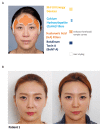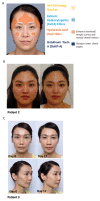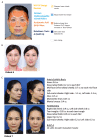PAN-ASIAN CONSENSUS-Key Recommendations for Adapting the World Congress of Dermatology Consensus on Combination Treatment with Injectable Fillers, Toxins, and Ultrasound Devices in Asian Patients
- PMID: 28979659
- PMCID: PMC5605210
PAN-ASIAN CONSENSUS-Key Recommendations for Adapting the World Congress of Dermatology Consensus on Combination Treatment with Injectable Fillers, Toxins, and Ultrasound Devices in Asian Patients
Abstract
BACKGROUND. The demand for minimally invasive aesthetic procedures has driven requests by physicians for guidance on their use in Asian patients, who have unique cultural preferences, social trends, and anatomy. However, few guidelines exist, particularly on combination treatment strategies for different facial shapes or indications such as the modification of face shapes to the "oval ideal."Physicians must, therefore, apply Caucasian patient-optimized guidelines to their Asian patients. METHODS. Eleven specialists developed a consensus on the use of botulinum toxin A (BoNT-A), calcium hydroxylapatite (CaHA) and hyaluronic acid (HA) fillers, and microfocused ultrasound with visualization (MFU-V) devices in Asian patients on upper-, middle-, and lower-face indications, including strategies to modify different facial shapes to the oval shape. Approval from 70 to 90 percent of all participants led to moderate consensus, while 90 percent agreement denoted a strong consensus. RESULTS. For early intervention/enhancement and restoration, most combination strategies are similar between Asian and Caucasian patients. Compared to Caucasian patients, however, beautification is a more common focus in Asian patients. The "ideal" oval facial shape can be created using different interventions depending on the patient's baseline characteristics. CONCLUSIONS. Although treatments and treatment sequences for early intervention/enhancement and restoration for beautification in Asian patients are similar to those in Caucasian patients, different treatment strategies may be required.
Keywords: Asian; botulinum toxin; combination treatment; consensus guidelines; fillers.
Conflict of interest statement
FUNDING:No funding was provided for this article. DISCLOSURES:Drs. Kerscher, Lam, Peng, Suwanchinda, and Tseng have no conflicts of interest relevant to the contents of this article. Dr. Rzany is a speaker and/or advisor for IPSEN and its affiliates, Galderma and Merz. Dr. Chhabra has no . Dr. Seo is a clinical investigator and/or consultant for Allergan, Merz Pharmaceuticals, Q-Med/Galderma, Medytox, LG Life Sciences, and Daewoong. Dr. Corduff is a speaker/advisor for Merz, Motiva, and Spiran. Dr. Fabi is a speaker, consultant, and investigator for Galderma, Merz, Allergan, and Valeant and is an investigator for Revance. Dr. Pavicic is a speaker and/or advisor for Merz, Galderma, Cynosure, Eucerin, Dermaceutic, and Ipsen. Dr. Chao is a speaker and/or advisor for Galderma, Merz, and Valeant.
Figures





References
-
- Carruthers J, Burgess C, Day D, et al. Consensus recommendations for combined aesthetic interventions in the face using botulinum toxin, fillers, and energy-based devices. Dermatol Surg. 2016;42(5):586–597. - PubMed
-
- Sundaram H, Liew S, Signorini M, et al. Global Aesthetics Consensus Group. Global aesthetics consensus: hyaluronic acid fillers and botulinum toxin type A-recommendations for combined treatment and optimizing outcomes in diverse patient populations. Plast Reconstr Surg. 2016;137(5):1410–1423. - PMC - PubMed
LinkOut - more resources
Full Text Sources
